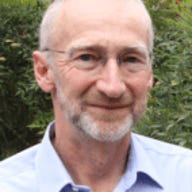Start up Wirriga to track Sydney's air quality

One day, if you're looking at buying a home in Sydney you might be able to go on to your favourite real estate website and check out the air quality in the neighbourhood. It's just one of many possible applications of the Visible Air project being developed by Sydney-based Internet-of-Things startup, Wirriga.
Wirriga's CEO, Maryanne Large, told ZDNet: "We are aiming to establish a network of sensor stations that measure various types of air pollutants. Some would look at carbon monoxide, ozone, nitrous oxide and particulates."
She said air pollution was a significant cause of ill-health.
Latest Australian news
"There is very strong evidence linking air pollution to a whole lot of health problems. People are aware of the respiratory issues, but the more significant issues are cardiac and stroke. Things that get into your lungs get into your bloodstream and there are lots of studies about the real impact of air pollution, even to the extent of being able to predict the degree of calcification of arteries according to how far you live from a main road."
She claimed that air pollution in Australia was worse than most people realised.
"It is a compounding factor in so many health problems. There was a study about 10 years ago which showed that the cost to the NSW economy in the greater Sydney region was about AU$890 per person per year."
Large explained that present measurements of air pollution are undertaken only at a few locations.
"We are trying to get a much more fine-grained picture of what is happening with pollution: at a street level, in your neighbourhood, in your kids' schools. This project is about trying to make air quality visible so that you would know how it changes with season, with time of day, with location."
Wirriga plans to offer a limited amount of information from the sensors for free to the general public via a website and to sell more detailed information to third parties such as news agencies, real estate agents, and government bodies to aid in planning.
"I like to think the City of Sydney would be interested in using it to track the effects of policy changes," Large said. "For example, if you change parking regulations, what effect does that have on pollution? If you increase the number of buses, does that made a difference? Are there sites where you would not expect to see high levels of pollution?"
She said that Wirriga had developed its own monitoring units and was planning to deploy a small number for a trial around the Smart Locale area in the Sydney inner city suburb of Pyrmont. Smart Locale, backed by local businesses and the University of Technology Sydney, aims to "accelerate the transformation of the local economy into an internationally recognised showplace for smart, safe, sustainable living by 2020."
"It is an interesting area that aims to meet sustainability targets much earlier than the rest of the city. It includes Google, Fairfax, the ABC, the Powerhouse Museum, UTS and Sydney TAFE. They could be interested in this kind of project, and some have already signed up to the trial," Large said.
In the longer term Wirriga hopes to work with schools.
"They are suitable for us because they are spaced around the city, they have power, they are safe, and they are in locations where people will be particularly interested in the data," Large said. "People are concerned about the school environment because their kids spend a lot of time there. We would also like to give the kids access to the data and get them using it for science projects."
Wirriga, a Dharug word for goanna, was founded by three research scientists: Large, Dr Don Bone as COO and research leader for data analytics, and Dr Sergio Leon-Saval as CTO and research leader for instrumentation. The company has been largely self-funded to date, but Large said it would be seeking funding once its trial is up and running and it is able to demonstrate its technology.
Wirriga believes it could provide coverage of Sydney with about 50 monitoring units and that these could be built for about $5000 each.
"For less than $1 million I believe we could have a pretty good network in Sydney," Large said. "But in terms of funding we might look for about $250k to do a limited rollout."
"One of the things we would want to spend money on is tools for analysis and integration with other devices. We would want to work with organisations like the Asthma Foundation and the Heart Foundation to get some tools to make our data as useful as possible."